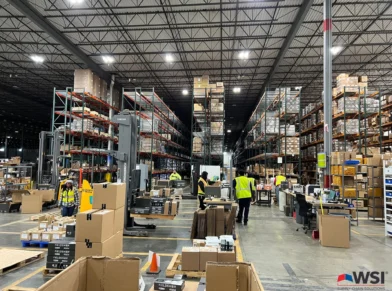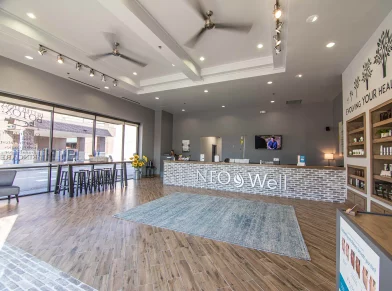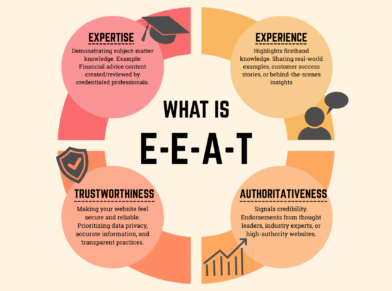MAKE YOUR MARKETING AUTOMATION EMAILS WORK HARDER
by Alicia Kan
No matter how successful your marketing automation work flow is, each element can always benefit from occasional testing and refinement. We’ve compiled some of the best recommendations in our Testing To-Do list that seem worthy of the experimentation given the stellar results reported. They may inspire similar improvements on your end:
A/B test a fully designed email with a plain text one
For some time now, it’s been marketers’ common struggle for their emails to even make it to recipients’ inboxes — Gmail famously shunts Mailchimp, Constant Contact and other promotional emails to the Promotions tab where they languish unless a recipient marks an email as something they’d like to see in the main folder. (Or, senders go through the labor-intensive process of DKIM to get Google’s rubber stamp of approval.)
Perhaps dialing down the design elements and making an email seem ‘official’, i.e. just plain text, circumvents the rerouting. Sharpspring reports that click-through rates for plain text emails are double those of emails using a decorative template.
The Customer Acquisition Consultant reports similar results when he did an A/B test. His take: Plain text emails are less likely to be caught in spam filters, don’t look like ads, and feel more personal. “Ugly could be effective,” was his verdict.
Send a welcome email that’s a keeper
How many of us have received the canned ‘thank you for subscribing’ email and immediately deleted it? Whether you’re an online retailer or a professional services firm, the humble thank you email can be elevated into a missive that brings your prospect closer to being a customer. Some food for thought:
Customize the email with the recipient’s first name. That prospect has just signed up; get to a first-name basis with your welcome email. This Harvey Nichols example via Ometria is simple, spare and makes the recipient feel like the center of their universe:
Give away something of value. Via Teachable: Noah Kagan, co-founder of the very successful AppSumo, has a short welcome email that gives away a presentation on his best rogue marketing strategies as well as a book on his days at Facebook (he was employee #30). Obviously an email not meant for the junk folder.
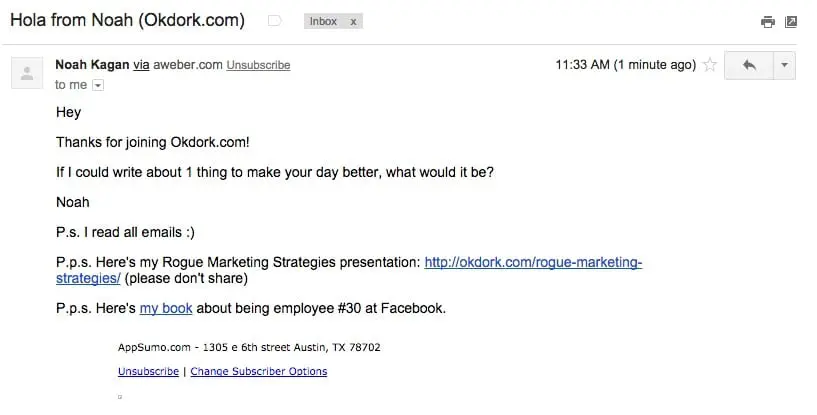
If you’re a retailer, get them to start shopping while they’re in the mood. Your recipient is feeling expansive after sharing his or her email address. Capitalize on the endorphin rush by dangling instant gratification images and calls-to-action.
This Crate and Barrel welcome email has an irresistible picture — imagine yourself entertaining al fresco! — and a solitary call-to-action button. It’s just one of many excellent retail examples shared by Smiley Cat.

Make people think twice about unsubscribing
Unsubscribe numbers are among the hardest to view among marketing automation metrics, but some creative marketers have managed to make the breakup process harder with their emails. Some techniques you may consider for your own sequence:
Give people the choice of taking a break. From Contently comes this clever Yankee Candle email that offers a ‘snooze’ option for 30 days, a fantastic option for the holidays when email marketing goes into overdrive.
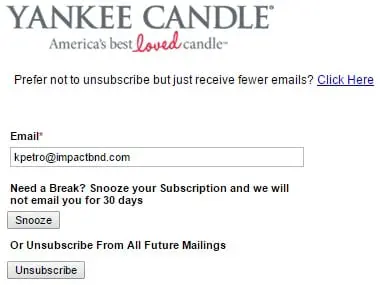
Get ’em to smile. It is possible with an unsubscribe email, as True Citrus shows below. This example via Jellyvision ticks all the boxes: It gets to the heart of the matter; it’s witty; it makes a (classy) last-ditch attempt to keep the subscriber. Honestly, would you unsubscribe with this level of effort?
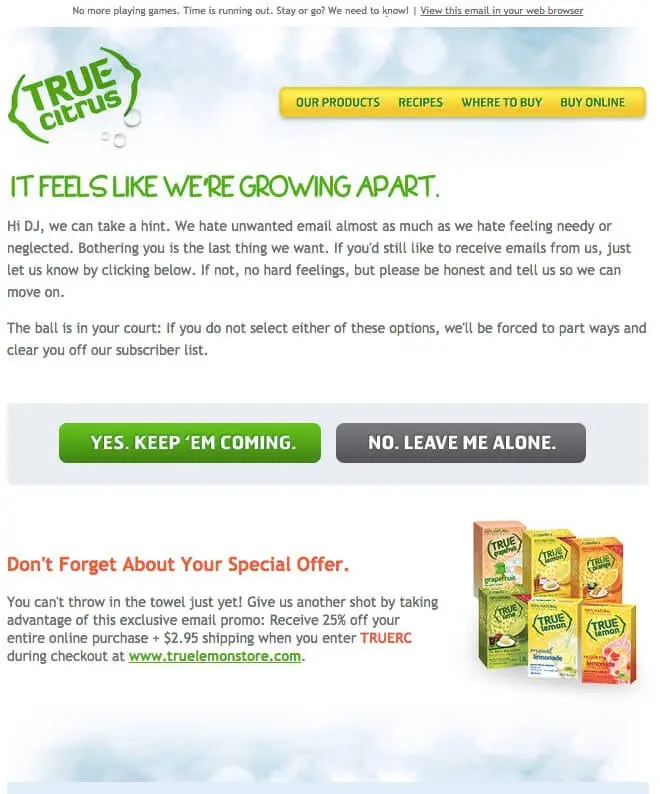
And if they really, really want to go? Set them free and four weeks later:
Schedule a re-engagement email. The caveat is you must have a great message and an irresistible offer, like this Missguided example provided by the good folks at Emma.

Got any more fantastic examples to add to the above? Post a link in the comments section.
Image: Good marketing automation is like this Wasabi sushi conveyor belt — every part works as hard as it can to create an effective work flow.
WEBSITE LOAD SPEED
Load Speed is probably the number one factor that has a big impact on your site, SEO, user experience, and leads on your website.
The world is getting more connected.
Mark Zuckerberg’s speech talked about the unmanned drones that will fly around the world and provide internet to third world countries so people can get online and go to Facebook, surf the web, and be part of the digital community.
If you want to reach those millions of consumers, you’re going to have to have a website that loads quickly because they are not going to wait around for a slow site through potentially a weak internet signal that’s coming in through a drone airplane that’s flying over them.
Even if you don’t want to reach the rest of the world and only want to deal with hyperlocal, people are more and more on their phones, moving around, who might have weak cellular signal, and having a fast loading site is important. So, test your site.
A good tool to use can be Pingdom Tools, or Google, which has a speed test of its own. These tools will help you understand where your site is failing. If your site contains large images or videos that take a long time to load, figure out how to minimize that. If it’s triggering error reports, take care of that.
Look at services like enabling caching, or content delivery with CEN, to figure out how you can achieve a faster and faster load speed. The better that gets, the more engagement you will generate from search engines or people.
As a rule of thumb, 1.8 seconds is what Google officially uses to determine whether or not the speed is sufficient. Run through some of these tests through different servers all over the world and see just how close you can get to 1.8 seconds. If you’re not quiet there, give us a call and we can help you with load speed.
MICRO-MOMENTS: BREAKING DOWN ‘I-WANT-TO-GO’ MOMENTS
When you want to go somewhere, such as to eat or to find something you need for a project, that’s what Google defines as ‘I-want-to-go’ moments. Finding places to go has become a massive function of online searches, so being able to take advantage of those moments is vital to attracting customers.
‘I-Want-To-Go’ Moments Defined
In many instances, ‘I-want-to-go’ moments involve “near me” searches. In other words, someone might search for “restaurants near me” or “hardware stores near me.” By and large, these searches are more generic than specific, so very few people are going to be looking for your brand. Instead, they’ll be interested in whoever is closest who can satisfy their needs.
A Scenario
Let’s take an example. Suppose Mr. Jim has a hankering for some waffles one Saturday morning. He also kind of wants to eat out rather than fix them himself. He pulls out his phone, and he asks Siri to search for “waffles near me.”
If you serve waffles, you want to make absolutely sure your restaurant comes up on that list. If it doesn’t, Mr. Jim is not paying you a visit. If it does come up, and if your site presents the quick message that your waffles are more amazing than anything ever (or if they at least look appetizing enough that Mr. Jim’s stomach screams “WANT!” to his brain), he’s likely going to visit you ASAP.
Making the Most of the Moment
To make the most of these ‘I-want-to-go’ moments, you need to remember a few things. These are:
- As stated, most “near me” searches are for generic keywords, not specific brands.
- Customer loyalty is nowhere near as important in these searches as convenience and instant satisfaction.
- Half of those who conduct these searches will visit the store within 24 hours.
- Roughly one out of five “near me” searches results in a purchase.
So the question now is whether your brand has the online presence needed to come up on “near me” searches. If you want help establishing that presence, contact our team of Digital Marketing Rockstars at Accelerate Online Marketing.
VIDEO: CONVERSION RATE OPTIMIZATION
Conversion Rate Optimization is extremely important. As an agency, we take this very seriously and I would say that sets us apart from most of our competition because we are really looking at driving more leads and more sales.
One of the primary ways we can do that is by increasing the percentage of people that make a purchase decision on any given landing page. The way we do that is through a simple A/B or multivariate testing. This is a simple test that tells us if a call-to-action, image, or headline, works better than the alternative or control set. Once we determine the winner, we implement the change and we start a new test.
This is incredibly powerful because it has the compounding interest of that. If we can make a 5% or 10% improvement on a monthly basis, overtime, that results in a powerful increase in the number of leads in a general area. One thing I would say about conversation rate optimization is that it’s an undervalued technique.
You don’t see a lot of SEOs truly practicing and the problem with most campaigns is not the paid search campaign or the SEO campaigns. It’s commonly the page isn’t converting a high enough percentage of visitors, particularly in competitive spaces that have a high cost-per-click.
The number of visitors that convert into a sales lead is the most critical element that we have control over.
That’s why we spend so much time and energy working on conversion rate optimization. I’d love to talk to you more about it.
Give us a call, but in the meantime, subscribe to our channel.
MICRO-MOMENTS: BREAKING DOWN ‘I-WANT-TO-KNOW’ MOMENTS
Recent research conducted by Google has shown that people are no longer going online for extended sessions of research. Instead, their internet usage is described as ‘micro-moments,’ or quick instances of online activity in which they actively search for specific information.
‘I-Want-To-Know’ Moments Defined
Some of these instances are called ‘I-want-to-know’ moments. In these moments, a person uses a device to search for answers to questions, whether out of a desire to make a better decision or simply for curiosity’s sake. These moments might be broken down as follows.
A Scenario
Suppose you’re relaxing for the evening in front of your TV. A commercial comes on, and it makes some astronomical claims about a product’s capabilities. You don’t really feel like you need the product itself, but if it’s all it claims to be, it might be worth looking into. And after all, you kind of wonder if it actually does everything the commercial says it does.
So you reach for your phone and ask Siri to pull up some reviews. That moment is when your question needs to be answered, and you’ll probably stick with whatever information you find—positive or negative.
Making the Most of the Moment
If the company is smart, they’ve probably published some content about their product that will work within this moment. The response they tailor for the question you have (something like “Is this thing legit?”) needs to have these qualities:
- It must be concise and quickly digestible.
- It must have a genuine tone that is consistent with the company’s other advertising.
- It should be informative. If it provides no value in the first few seconds, it will likely go ignored.
- It should be optimized for search engines so it ranks high on the list.
A wise company will have incorporated content onto their site that will provide the answers you are looking for. Those answers will be quick, succinct, and informative.
Now, if you’re a company looking to make the most of ‘I-want-to-know’ moments, internet marketing services like Accelerate Online Marketing can assist you, so contact us today.
VIDEO: A/B TESTING
I want to talk to you today about A/B Testing and always keeping your website up-to-date. So, when we look at web design, I have a lot of clients that, in the past, have not really messed with their website much for maybe a few years. They have it designed, they spent a lot of money with an agency, and then leave it alone for two, three, or maybe more, maybe 5, 6 years, and they really don’t significantly change it.
So what happens is they get up to date with technology and then it stays stagnant and technology keeps going upwards. Finally, they jump up and are in line with the rest of the world.
Mobile Responsive Design is probably the most recent example of a website update that a lot of people didn’t do immediately and now everyone is finally catching up to it. But what if we thought about it a different way, and let’s take the best in-breed companies, and I’ll have you think about Amazon right now. So amazon.com, can you remember a time when they made a radical update to their website layout and changed it completely? No, because they haven’t done it.
Their website instead has improved in small increments literally on a daily basis. Now, that company and their entire business is based on their website so they do it all the time, but even if we made small incremental changes on a weekly or monthly basis, the website can stay up-to-date and current without having to have a radical design change.
One of the other challenges with radical design change is if you have a successful site and you completely change it, sometimes you throw the baby out with the bad water.
I’ve seen sites that have maybe a somewhat ugly design, but they work. They get it redesigned and suddenly they don’t perform as well. Instead, if you implement an A/B test on a regular basis to determine if a small change will improve or decrease performance, and then only implement winners, you’re constantly enhancing your site rather than taking two steps forwards or one step back.
HOW TO BUILD BRAND VALUE AND CUSTOMER LOYALTY
You represent your brand, but if your brand doesn’t offer anything to the public, you’re not likely to attract customers. It needs value. Fortunately, your brand most likely began with a good idea, and it can provide real value to clients. The trick is communicating that to your audience and being there, armed with credible information, when they need you most.
But how exactly do you do that? Here are a few things to consider when building brand value and customer loyalty.
- State what you do: Before you communicate what you do, you need to know it. Take some time to hash out what you truly offer and how it differs from the rest of the market. For example, if you own an ice cream parlor, you can state that you offer dozens of delicious daily flavors within a family-friendly environment. It shows both value and what sets you apart.
- Create real content: This is more than just mindless fluff or keyword optimized text. This means content that will be genuinely helpful to your audience. It should be meaningful and useful, and as a result—almost incidentally—it will show that you have the skills and experience to provide real solutions to your clientele.
- Be consistent: If your hodge-podge online presence could be safely compared to Frankenstein’s monster, you need to make some changes. Keep your branding and tone consistent across all platforms, both digital and real-world. This includes blogs, social media posts, videos, logos, website aesthetics, etc.
- Stay connected: Social media marketing allows you to connect with your audience in a way that has never before been possible. However, to reach its potential, it must be used correctly. Take the time to put out engaging posts that will get responses—then respond in kind to your audience. Staying actively engaged in relevant conversations can make a real difference and increase customer loyalty in a genuine, organic way–plus, if you are absent from the conversation, you aren’t very likely to hear what clients concerns, issues, and needs are.
Of course, these methods are all far more nuanced than they appear on paper. Online marketing specialists can help you build your brand, create real content, and stay connected. For the assistance you need, contact us today at Accelerate Online Marketing.
.BEST VS .COM SPONSORED STUDY: WHICH DOMAIN IS KING?
With over 100 million .COM names registered (and counting) some businesses are finding it exceedingly difficult and more expensive to find competitive edge in SEO and SEM.
With most meaningful .COMs taken, businesses are spending more to drive traffic to their domains.
Our team wanted to research how keyword-rich new gTLD domain names affected the SEM value of an online property. In other words, would naming a domain with a new gTLD (in this case, .BEST) rather than the traditional .COM have a positive statistical impact on a website?
Based on our testing and research of a series of domains on Google throughout May 2016 (testing which included hundreds of keywords and thousands of impressions), Globe Runner arrived at the conclusion that the .BEST domain conferred a tangible benefit over the .COM domain in online advertising efforts.
As pictured below, utilizing a .BEST domain boosted results both in cost and clicks.
Our research shows that you can save money and reduce your cost per lead by using one of the new gTLD domain names.
Particularly in the moving industry, the .BEST domain name allowed us to save dollars-per-click within Google AdWords. In the long-term, after thousands of clicks, this price difference would make for significant savings.
If you’d like to know more about the sponsored study, download our report and compare the results between .Best and .Com domains.
HOW TO GO ABOUT DOING KEYWORD RESEARCH
by Alicia Kan
Everyone always asks a digital agency about their keyword research process. The truth is that there are as many techniques as there are ways to take your coffee: Literally hundreds, and no way is right or wrong.
At Globe Runner, we’ve got a keyword research framework that everyone has customized with their favorite tools and resources. Use it to build your own process for your own purposes, and keep it flexible enough to accommodate any new keyword research developments that come along.
Why conduct keyword research at all?
Because skillfully incorporating search terms your target audience is using to find your products or services increases the likelihood of their finding you. Whether you’re launching a new website, aiming to grow your blog readership or wanting to increase your social media followers, doing keyword research helps to make your activity more focused and strategic.
Step 1: Do baseline and gap analyses
If you are working on improving your website, what does the current situation look like and where would you want it to be? Start with how many keywords the site is actually ranking for. Create a spreadsheet to keep track of all the terms, and to give you a firm idea of how close/far you are to your goal.
Each section of the site should have a tab in your spreadsheet. For example, if you have a fashion e-commerce site, have a tab for each category of clothing, e.g. tops, bottoms and shoes. Each tab will have multiple types/variations of keywords. Tops might have t-shirts, tank tops, blouses and so on.
Keeping a spreadsheet not only organizes your activity but allows you to break down the job in manageable chunks. It also gives you a sense of progress as you complete each section.
Step 2: See how you stack up against the competition
After you’ve assessed where you are and where you want to be, it’s time to look at the competition. What keywords are they ranking for?
Use SEM Rush to plug in your site as well as those of a few worthy competitors. With SEM Rush you get a better idea of what your site and those of your competitors are ranking for and how they’ve been affected by Google’s algorithm updates over the years.
Under the ‘Organic Research’ tab, find the ‘Positions’ menu (see red arrow in our example using Inbound.org). You’ll see a list of keywords as well as a graphic showing historical data. Export the organic positions data (where the other red arrow points to). This way you get the ‘money terms’ only.
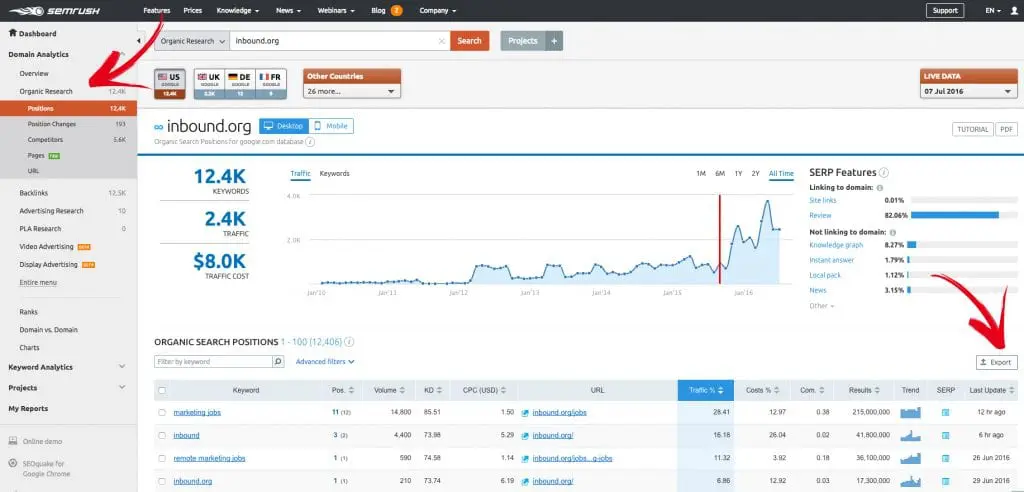
Once you’ve exported the list, delete all columns except for these:
- Keyword
- Position
- Search Volume
- URL
- Competition
- Number of Results
Sort by Search Volume – Largest to Smallest.
Step 3: Get creative — find suggestions
Use the keywords you gathered and plug them into Google for it to auto-suggest related terms. You’ll see several recommendations that users might be more apt to choose over their original search term. We’re using one of the terms that Inbound.org is ranking for on page 1, and that’s ‘hubspot certification’.

Pull terms you don’t have in your spreadsheet and add them to the relevant tab. You’ll also see a similar list of suggestions at the bottom of the search page.
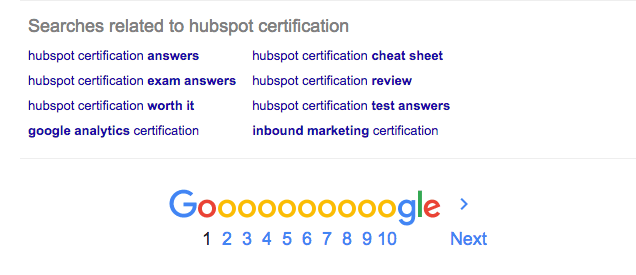
Rather interesting how ‘exam answers’ and ‘cheat sheet’ are popular related searches 🙂
Google’s auto-suggest feature is just one tool to use in digging up other related keywords but there are more choices out there, such as:
Google Keyword Planner. Obviously where everyone starts. ‘It allows you to easily organize keywords and download them in a format that can be imported into Adwords Editor.’ – Katy
Keywordtool.io. ‘It lets you see what kind of questions people are asking.’ – Jenna
Hashtagify. ‘Great for finding popular terms on social.’ – Lauren
Keyword Shitter (yes, it exists). ‘Easy to use; no fluff.’ – Zain
As for myself, I like using different tools depending on the situation. Moz’s relaunched Keyword Explorer has at least two billion keywords to nerd out to — this Reddit thread is a great conversation between Russ, the developer who worked on it, and members of the SEO subreddit. Google Trends is particularly useful for determining seasonal content — enter a search term and it’ll show search trends over time and related terms at the bottom of the page. Spyfu is worth its weight in gold when it comes to PPC and beyond. I’ve used competitors’ best performing ads to extract keywords for web copy for instance.
Don’t forget too that sometimes you can find gems closer to home. If you’ve got Google Search Console all set up, head over to the ‘Search Traffic’ tab and down to ‘Search Analytics’. You can filter Queries by ‘how’, ‘why’ and other qualifiers in order to see what questions people are typing into the browser.
Step 4: Test your terms
By now, you should have a dizzying abundance of keywords. It’s time to narrow them down to the best ones.
Enter the keywords you’ve gathered into Google’s Keyword Planner — click the ‘Keyword Ideas’ tab below the bar graph to find exact search volumes for the terms you entered. Below it you will see several keywords similar to what you entered that would be good candidates as well. Look for keyword opportunities with high search volumes and low to medium competition that may not have been targeted previously.
Once you’ve narrowed down the list, enter them into the Moz Keyword Difficulty Tool to determine how competitive the terms are. The difficulty will be expressed as a percentage; the higher the percentage, the more competitive the term will be.
Have thoughts on Grep Words, Top Visor and other new(er) keyword research tools? Know of any other resources? Add them to the comments below.
Photo of antique keys by Sergio K via Flickr
- « Previous Page
- 1
- …
- 21
- 22
- 23
- 24
- 25
- …
- 43
- Next Page »
